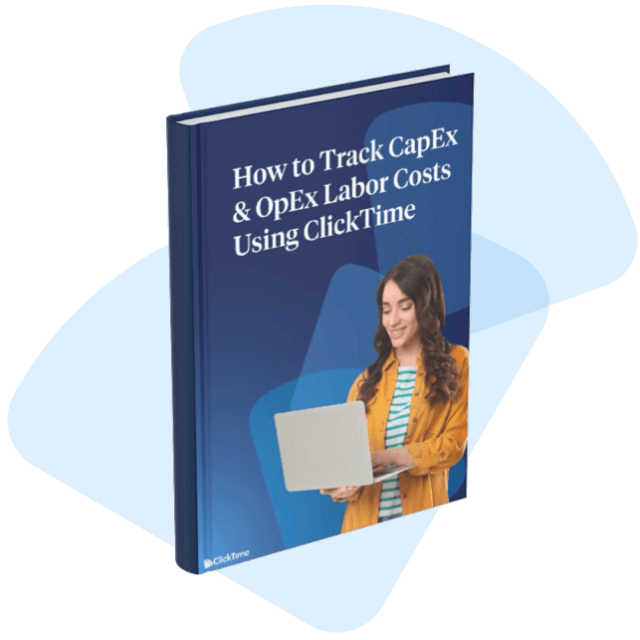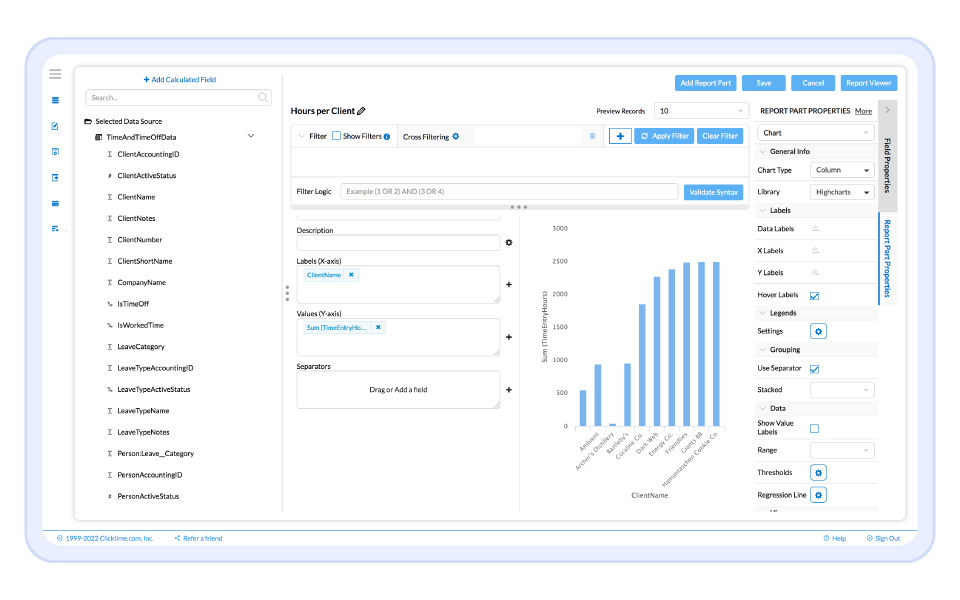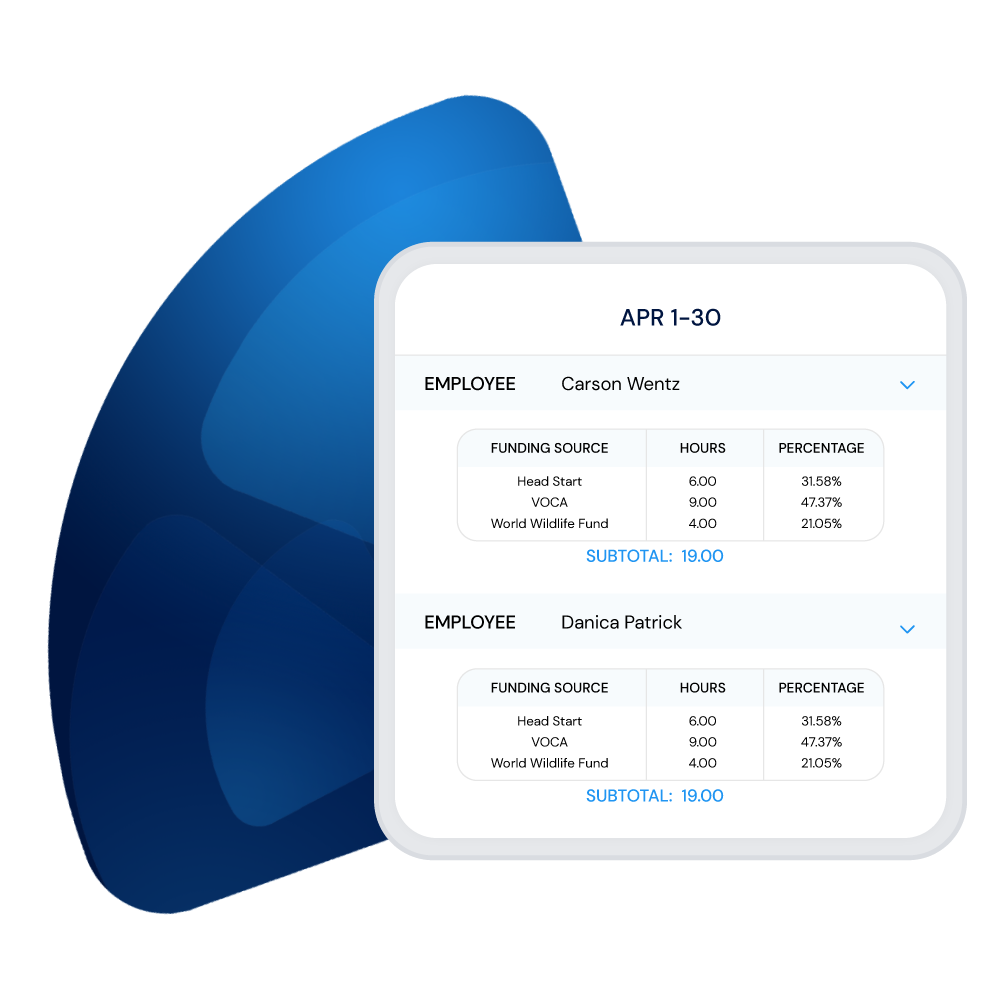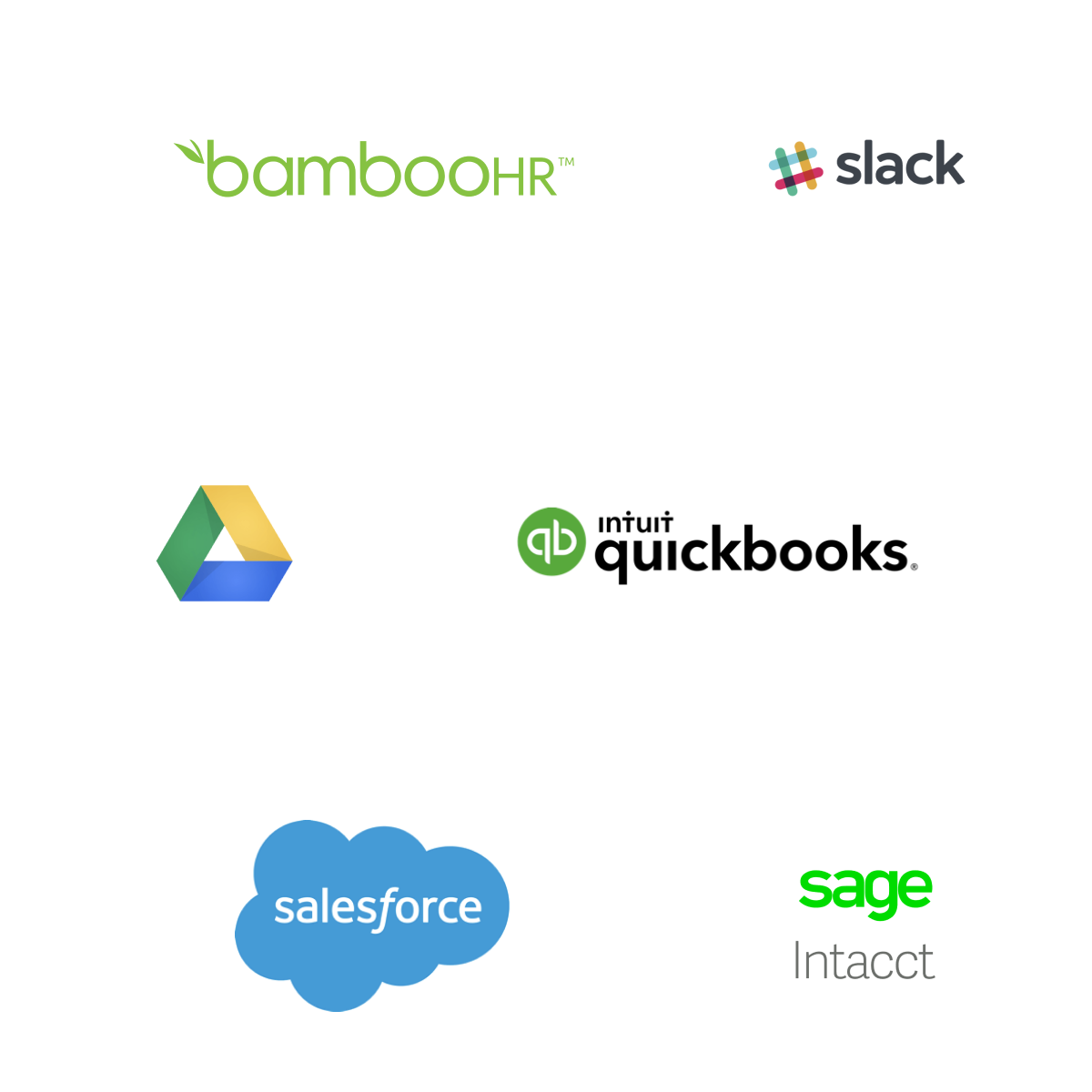Time Tracking for OpEx and CapEx
Efficiently account for both expenses and expenditures.

Track Time with Ease and Accuracy
Streamline Your Projects and Labor Cost AllocationsClickTime has you covered when you need to precisely account for hours spent on CapEx and OpEx projects. Our time tracking data is coded correctly at the exact moment of entry. That way, you can ensure that the information you send to your accounting system of record is highly accurate.
Make data-informed decisions
Uncover Insights for Better AccountingUse our Business Intelligence & Analytics tool to run reports on both in-flight and historical projects and use those insights to determine the right balance of OpEx or CapEx projects based on your business’ accounting needs.
Understand your Labor Efforts
- Use time tracking data to assess the total cost that may be subject to CapEx or Opex treatment.
- Submit, review, and approve timesheets with expenses or expenditures.
- Provide granular details of each cost in time entry notes.
- Report on time tracking data to ensure you are audit ready.

Free eBook Download
How to Track CapEx & OpEx Labor Costs Using ClickTimeLearn how one of ClickTime’s largest clients tracks capitalized labor in our platform, and how we tailor our software to meet the unique needs of each of our clients.
FAQs
Capital expenditures (CapEx) are major purchases a company makes that are designed to be used over the long term. Operating expenses (OpEx) are the day-to-day expenses a company incurs to keep its business operational.
Most often, wage labor is expensed by a company as it is paid. However, certain labor is allowed to be capitalized and spread out over time. This is typically labor that is identified as directly related to the construction, assembly, installation, or maintenance of capitalized assets.
Capitalized Labor means all direct costs of labor that can be identified or associated with and are properly allocable to the construction, modification, or installation of specific items of capital assets and, as such, can thereby be written down over time via a depreciation or amortization. The resulting benefit is often improved net profit as only the annual depreciation amount shows up on the income statement as an expense.
Tangible assets are the main type of assets that companies use to produce their product and service such as machinery, buildings, vehicles, and land. Intangible assets are non-physical assets that have a monetary value since they represent potential revenue. Intangible assets include patents, copyrights, and a company’s brand.
Yes. While software is not physical or tangible in the traditional sense, in many cases accounting rules allow businesses to capitalize software as if it were a tangible asset.
Disclaimer: Always check with your accountant or tax professional to ensure you are aware of the specific rules for when software cost can or cannot be capitalized.







